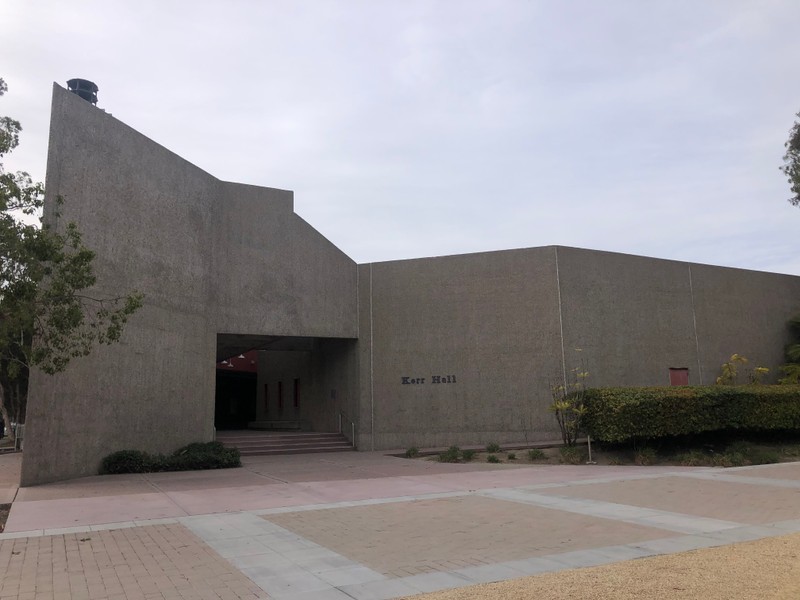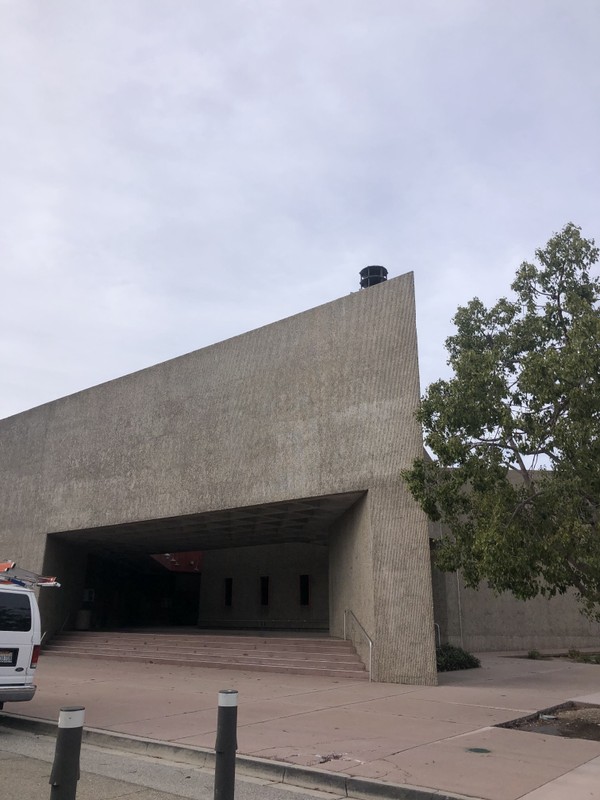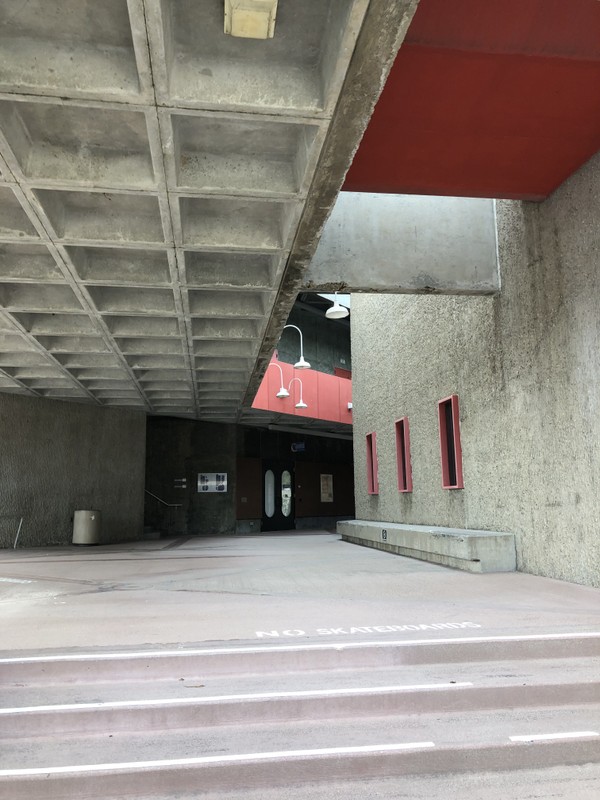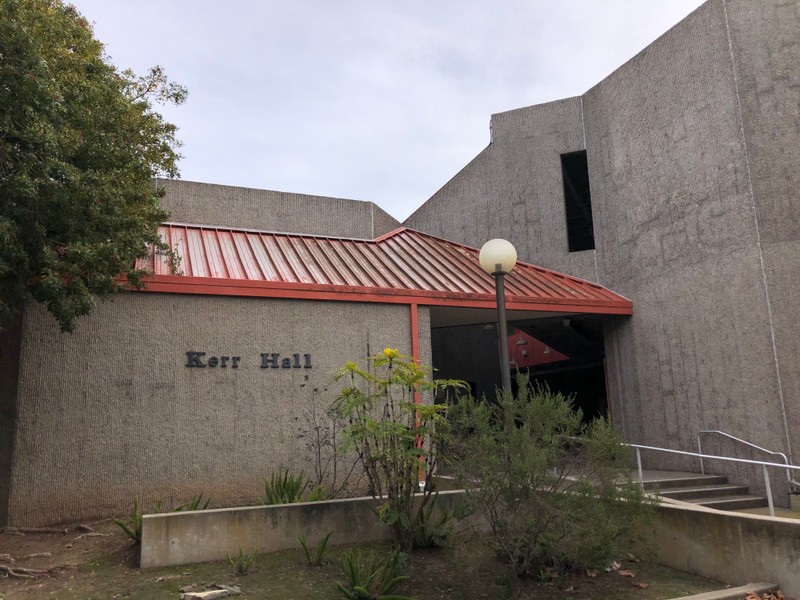Kerr Hall
Introduction
Text-to-speech Audio
Images
Kerr Hall view from the Library Plaza

Kerr Hall entrance steps

Kerr Hall exterior lobby

Kerr Hall north side entrance

Backstory and Context
Text-to-speech Audio
Kerr Hall was built in 1975 by architects Marquis & Stoller. Originally named the Learning Resources Building, it is used today for the ONDAS Student Center and Instructional Development department. At the time that Kerr Hall was built UCSB students were leading activism to support national movements and create change at UCSB. Protesting the Vietnam war, the apartheid in South Africa, and involved in the Civil Rights Movement, students made their voices heard. Students in 1968 occupied North Hall in order to protest unequal treatment, effecting change and the establishment of the Black Studies Department and Center for Black Studies Research.
In 1970, the infamous burning of the Isla Vista Bank of America occurred protesting the Bank’s indirect funding of the apartheid to secure their own economic gains. These events ultimately affected enrollment and subsequently Kerr Hall was only one of two buildings constructed in the late 1970s. The dark grey facade and bunker-like design seems to reflect the student culture during this tumultuous time.
This style roughly falls under the category of Brutalist architecture. Brutalist architecture reached its zenith of popularity in the 1970s, with its trademark utilitarianism and austere concrete walls. Usually seen in public buildings, the style has been associated historically with socialism with the first Brutalist building seen in France. Some key features include a focus on texture, a grandness in the large scale forms, and using interesting shapes in the form of the building itself.
These features can be seen within Kerr Hall with its rough concrete exterior, unusual curves and severe edges of the roof-line. However quickly this style came to popularity, it rapidly lost prevalence as styles shifted and it came under criticism for its cold appearance. Still, Kerr Hall represents this architectural style and the shifting culture at UCSB.
As you walk around Kerr Hall, there is also interesting trees to be found, and referencing the campus Flora project, the Kurrajong tree from Australia is one of them. Here is a link to check out this fascinating project and the other plants available to be seen on campus to add to the campus experience: https://bit.ly/2QMXhhk
Sources
Stewart , Jessica . Brutalism: What Is It and Why Is It Making a Comeback?, December 4th 2018. Accessed November 30th 2020. https://mymodernmet.com/brutalist-architecture/.
Brutalism in Architecture, Accessed November 30th 2020. https://www.architecture.com/explore-architecture/brutalism.
Estrada, Andrea . North Hall Takeover 50 Years Later, October 9th 2018. Accessed November 30th 2020. https://www.news.ucsb.edu/2018/019214/north-hall-takeover-50-years-later.
Chupein, Sophia . Bank of America Burning, A.S Living History Project. July 20th 2020. Accessed November 30th 2020. https://livinghistory.as.ucsb.edu/tag/protest/.
1970s and 1980s, AD&A Museum UC Santa Barbara. Accessed November 30th 2020. http://www.adc-exhibits.museum.ucsb.edu/exhibits/show/ucsbcampusarchitecture/70sand80s.
Photo by Skylar Lines
Photo by Skylar Lines
Photo by Skylar Lines
Photo by Skylar Lines
